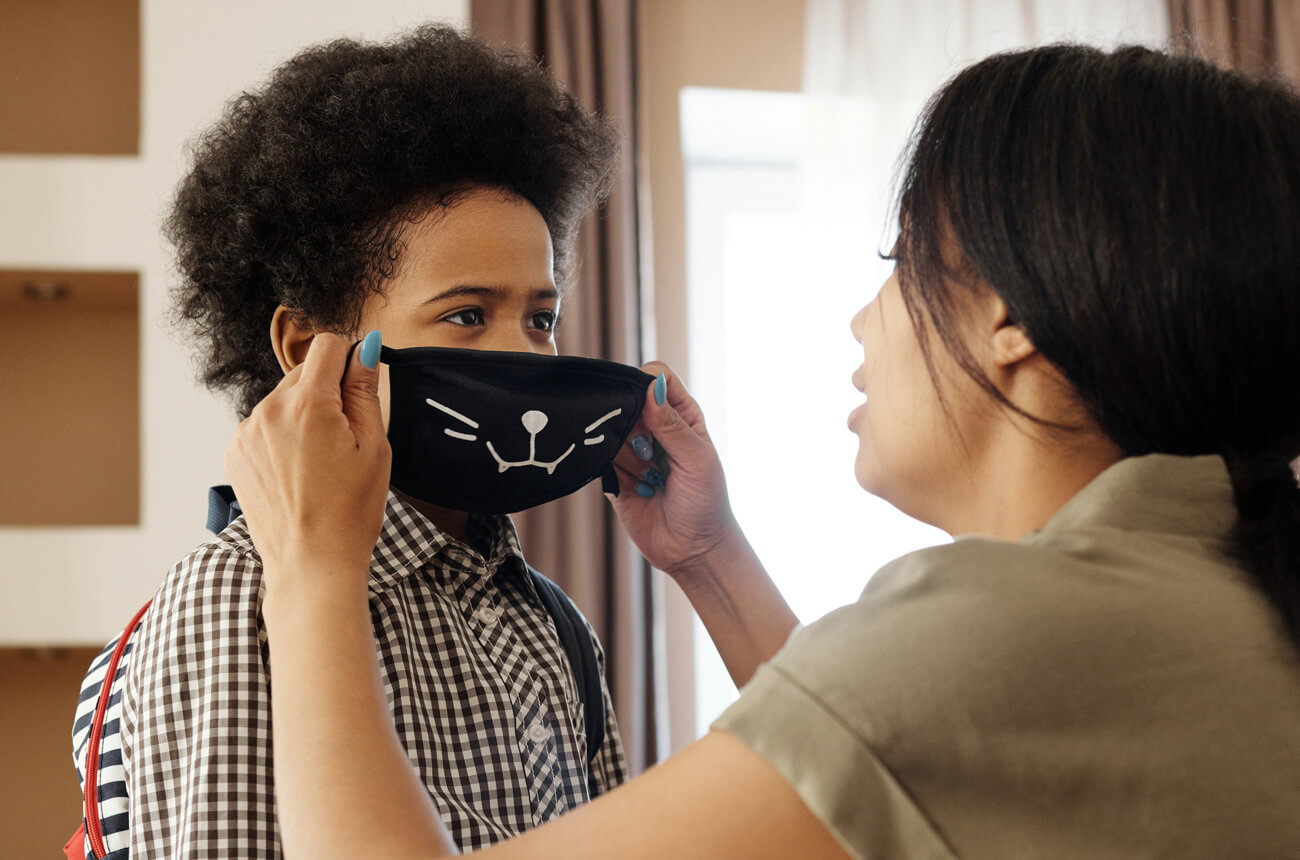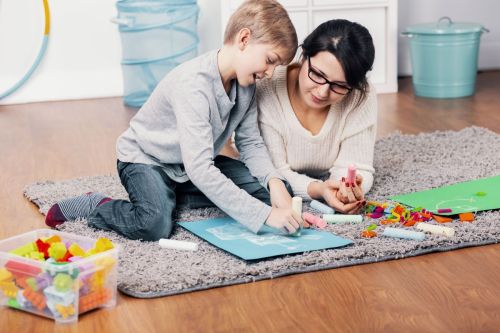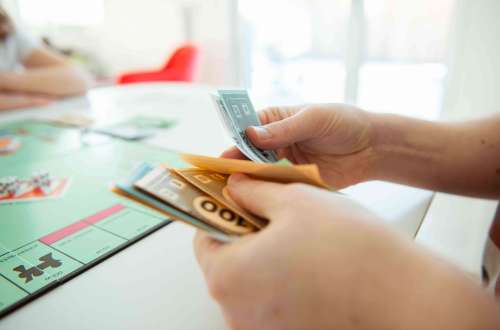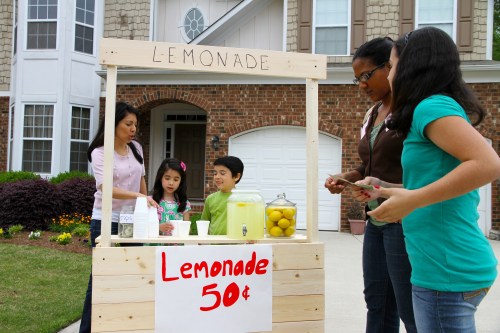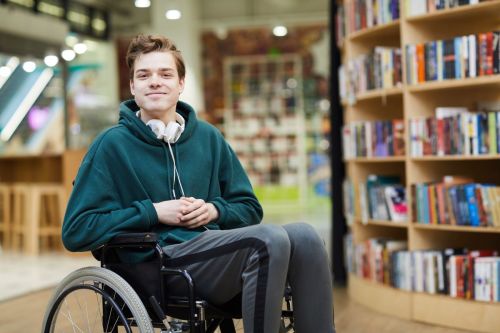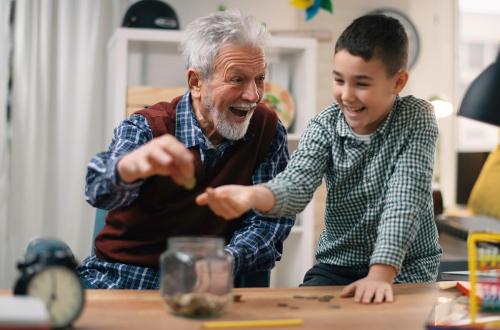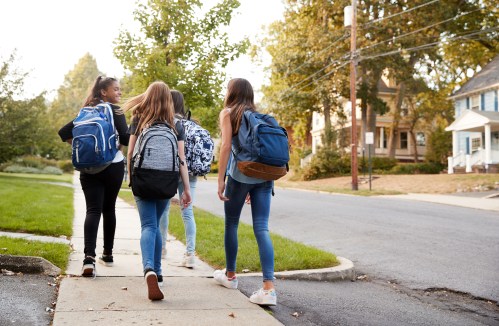Back-to-school butterflies are normal. Kids wonder whether their best friend will be in their class or if they’ll like their new teacher. However, there’s no denying the coronavirus (COVID-19) has added an extra layer of worry this year. School Boards across Canada are introducing changes for return to school, such as staggered start times and breaks, “learning bubbles,” where kids are grouped together to minimize contact with others, and face masks. Here’s how you can talk to your kids about COVID-19, how staying safe and healthy, as well as how to manage their anxiety, so they’re set for a successful 2022/2023 school year.
How to talk to your kids about school and COVID-19
It’s important our kids receive factual and honest information about COVID-19. As parents, you play a big role in that. SickKids suggests parents start by asking their children what they already know about the virus. Provide information that is appropriate for your child’s developmental level. For younger children, explain that COVID-19 is a new germ that can spread very easily from person-to-person through close contact like hugs or high-fives. Older kids should know the symptoms of COVID-19, including fever, cough, and having a hard time breathing.
Kids should also know that the virus spreads through droplets of saliva or mucus, and by touching contaminated surfaces, then touching their mouth, nose or eyes. When talking to your kids about the virus, reassure them that if they get sick, it doesn’t automatically mean they have COVID-19.
Sadly, misinformation on the virus is out there, which is why it’s important to stick to the facts. Digital Public Square, which is associated with the University of Toronto, has created a true or false Coronavirus Quiz to help kids learn the facts.
5 simple ways to prepare your kids for back-to-school
Setting your kids up with the right information and tools to manage their health while heading back-to-school is not without its challenges. Consider the below recommendations as things to talk about with your kids as you help them get comfortable ahead of an unfamiliar school year.
1. Manage expectations and ease their anxiety
Help ease any anxiety your kids might have about going back to school by preparing them for changes in their daily school routine. If your child has friends in another year or they are sorted into a learning bubble that doesn’t include their BFF, it’s important they understand why schools are doing this: to keep them, their friends and their teachers safe and healthy.
2. Practice social distancing
Ensuring that your kids understand what social distancing is and practicing physical distancing is important to slowing down the spread of the disease and preventing your kids from getting sick.
How to talk to kids about social distancing
Help kids understand and practice social distancing before returning to the classroom. For younger kids, explain in simple terms this means putting space between themselves and others to stop the virus from spreading. Make a game of it by drawing circles six feet apart with chalk on the pathway. You can also draw a picture of their classroom, imagining what it might look like this school year (in many provinces, classrooms are being reorganized to maximize social distancing between students).
Help your kids better understand what physical distancing looks like by role-playing. Chances are kids can’t wait to see their friends and give them a hug or high five. Show them how to greet someone without touching or suggest a virtual high five now instead of physical contact when they return to school. Older children should follow the same example when it comes to the importance of social distancing as a way to prevent the spread of the virus.
3. Practice proper hygiene
Along with talking to your kids about social distancing, and changes to their school routine, discuss the importance of practicing good hygiene as a way to prevent the transmission of COVID-19.
Handwashing
Explain how clean hands can protect against prevention. Teach them to wash their hands frequently and thoroughly with soap and warm water for at least 20 seconds, rinse off all traces of soap and thoroughly dry with a paper towel. Younger kids can sing “The Alphabet Song” or “Happy Birthday” twice through as a way of measuring the time.
Use hand sanitizer
Send your kids off to school with a bottle of alcohol-based hand sanitizer that is between 60% and 95% alcohol. Children can use hand sanitizer when they’re unable to wash their hands with soap and water, after sneezing or coughing, or after touching surfaces such as door handles. Teach them to apply enough hand sanitizer to cover all surfaces of your hands. Rub them together with the sanitizer until your hands become dry, to protect against germs.
Avoid sharing lunches and school supplies
The government of Canada is recommending schools reinforce a “no sharing” policy on food and drink, so you can expect that school boards will follow these guidelines. Explain to kids that means no bartering goldfish crackers for a juice box! To help with no sharing, give kids a say in what goes into their lunchbox, or try one of these 35 yummy lunch ideas. Pack utensils and a water bottle. It’s wise to include new supplies in your back-to-school shopping, so there’s no reason to borrow items from friends. Talk to them in advance about the importance of not sharing items or lending things to others.
4. Explain the importance of wearing a face mask
The Canadian federal government plans to release mask guidelines for kids aged ten and up when returning to school. Many provinces across the country are also making masks for students in Grades 5 to 12 mandatory. Back-to-school shopping should include buying breathable, cloth masks made out of at least two layers of tightly-woven fabric (such as cotton or linen) to wear at school. Ensure their mask fits comfortably around their nose and mouth. Remind kids to keep their hands away from their face and not touch their mask too often. There’s no shortage of fun and fashionable masks available for kids. Send your kids off to school with two masks each day, which they can keep clean by popping it in a ziplock bag. Remind your child not to share their mask with others!
If you have little ones, wearing a mask may be a source of stress. Explain in simple language that your child will understand why wearing a mask helps keep them healthy. Be a role model yourself and show your kids how and where to wear their mask correctly. TVO’s Dr. Cheddar lays out how to wear a mask in this adorable video for young kids.
5. Ease your child’s fears
Coping with the uncertainty of COVID-19 has been enough of a challenge for many adults, so it’s understandable that kids are feeling anxious. One thing parents can do to help is to normalize their child’s fears or anxiety. Let them know it’s okay to feel this way. Give your child a safe space to talk about their worries, whether it’s will their friends still like them or will they get sick? Provide factual, age-appropriate information to any questions on COVID-19. Parents can also use The Card System (Comfort, Ask, Relax, Distract) as a strategy to help their child cope and give them a voice during this stressful time.
Read more about what you need to know about back-to-school plans across Canada.
Practice makes perfect
Before the school year starts, take time to practice good hygiene. The more you practice and the more you talk honestly and openly to your kids, the more comfortable they’ll feel about their first day back at school.
No matter what you’re comfortable with for this upcoming school year, Mydoh will continue to be here, helping teach kids about how money works and keeping them busy after school. Sign up for Mydoh today and begin teaching your children financial literacy. Whether they’re at school part-time, full time, or learning remote, they’ll be able to earn money by doing chores and learn how to spend it wisely – and safely.
Download Mydoh today to learn more.
This article offers general information only and is not intended as legal, financial or other professional advice. A professional advisor should be consulted regarding your specific situation. While the information presented is believed to be factual and current, its accuracy is not guaranteed and it should not be regarded as a complete analysis of the subjects discussed. All expressions of opinion reflect the judgment of the author(s) as of the date of publication and are subject to change. No endorsement of any third parties or their advice, opinions, information, products or services is expressly given or implied by Royal Bank of Canada or its affiliates.
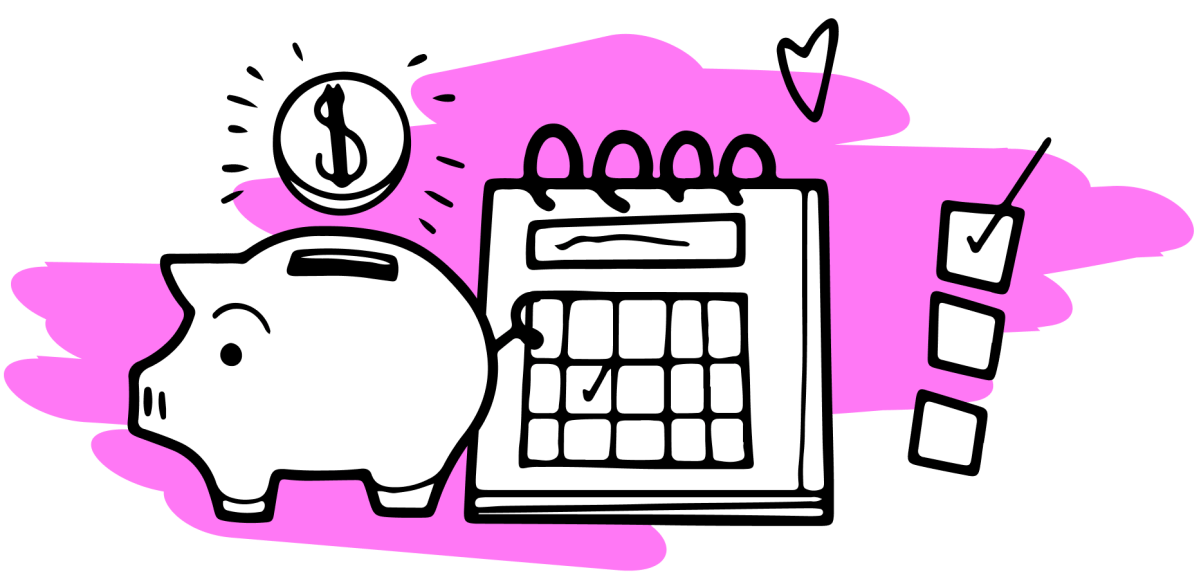
Teach Your Kids How To Earn, Spend & Save Money
with the Mydoh App &
Add up to five kids and two parents on one account.
